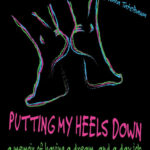An evening with the Mark Morris Dance Group (MMDG) at Meany Hall in Seattle was more than just a performance; it was a journey through decades of choreographic innovation and a testament to the enduring principles of what one might consider the Mark Morris Dance Studio ethos – a dedication to musicality, movement invention, and profound artistic expression.
Reflecting on the performance brought back a personal memory. Decades ago, an early encounter with Mark Morris himself in a semi-private class at the Russian Center, organized by Lydia Barrett, proved to be a pivotal moment. Witnessing his teaching firsthand, and even meeting his mother, Maxine, observing from the sidelines, left a lasting impression. The sheer physical demand of that class, a blend of character and ballet, sparked a deeper commitment to dance. Reading Morris’s memoir recently, it felt like paths had crossed unknowingly at various points – studying with Perry Brunson, learning Spanish from Sara de Luis, and even finding oneself at Marjorie Mussman’s studio in New York, mirroring his earlier trajectory. These connections highlight the interwoven world of dance and the significant figures who shape it, figures like Mark Morris who, through his company and his approach, embodies a distinctive ‘studio’ philosophy.
Verla Flowers’ legacy, reflecting the foundational training often associated with a nurturing dance studio environment.
The Seattle program featured Words, Rock of Ages, and Grand Duo, each piece showcasing a maturity and depth of expression that comes from years of dedicated artistic exploration. Morris, much like the legendary George Balanchine, understands the symbiotic relationship between exceptional dancers and compelling choreography. His company is a testament to this, populated by dancers who not only execute his demanding movement vocabulary with precision but also embody the musicality at the heart of his work – a core principle that would undoubtedly be emphasized in any Mark Morris dance studio setting. The choice of music, from Mendelssohn to Schubert and Lou Harrison, further enriched the experience, highlighting Morris’s deep connection to musicality, a hallmark of his choreographic process and a value likely instilled in dancers trained under his guidance, whether in a formal “Mark Morris dance studio” or within his company environment.
The Mark Morris Dance Group performing “Grand Duo”, demonstrating the precision and musicality central to the Mark Morris dance studio approach.
Morris’s choreography remains strikingly original. His movement language, instantly recognizable as “Mark Morris,” is a sophisticated blend of intricate footwork and expressive gestures, balanced with a masterful command of stage space and group dynamics. Unlike Martha Graham’s focus on movement originating from the pelvis or Isadora Duncan’s emphasis on the solar plexus, Morris’s style is characterized by its holistic use of the body and its intricate interplay with music. This distinctive approach to movement, likely honed and refined within the environment of a “Mark Morris dance studio” or his company rehearsals, sets him apart in the contemporary dance landscape.
“Words” by Mark Morris Dance Group, illustrating the nuanced gestural vocabulary that defines the Mark Morris dance studio style.
Rock of Ages stood out for its depth and romantic sensibility, incorporating a richer use of the torso, reminiscent of Graham’s technique. Songs Without Words, the opening piece, was a warm and visually captivating tapestry of movement set to Mendelssohn’s music, beautifully interpreted by musicians Georgy Valtchev and Colin Fowler. However, it was Grand Duo that proved most impactful. The final movement, in particular, was breathtaking, featuring a unique and rapid hand gesture, a sideways scrubbing motion, that felt distinctly Morris – a testament to his boundless creativity and inventive mind. This level of originality and detail is a hallmark of his choreography and likely reflects the rigorous training and creative exploration fostered within a “Mark Morris dance studio” context, even if such a studio is primarily embodied by his company.
The dynamic and distinctive hand movements in “Grand Duo”, a signature element reflecting the innovative spirit of the Mark Morris dance studio philosophy.
Despite a minor disruption with a misplaced cell phone alarm and a few early departures from less-than-cultured audience members, the performance was a resounding success. Like Cunningham and Balanchine before him, Morris’s work may not appeal to everyone, but for those who appreciate choreographic integrity and artistic vision, the MMDG program was deeply rewarding. Mark Morris’s choreographic voice remains unique and vital. It is crucial that he continues to resist homogenization and maintain his distinctive artistic identity, ensuring that his company and his influence – the legacy of his “Mark Morris dance studio” principles – continue to inspire and challenge the world of dance for years to come. It was a privilege to witness this homecoming performance and to reflect on the enduring impact of Mark Morris’s contribution to dance.

